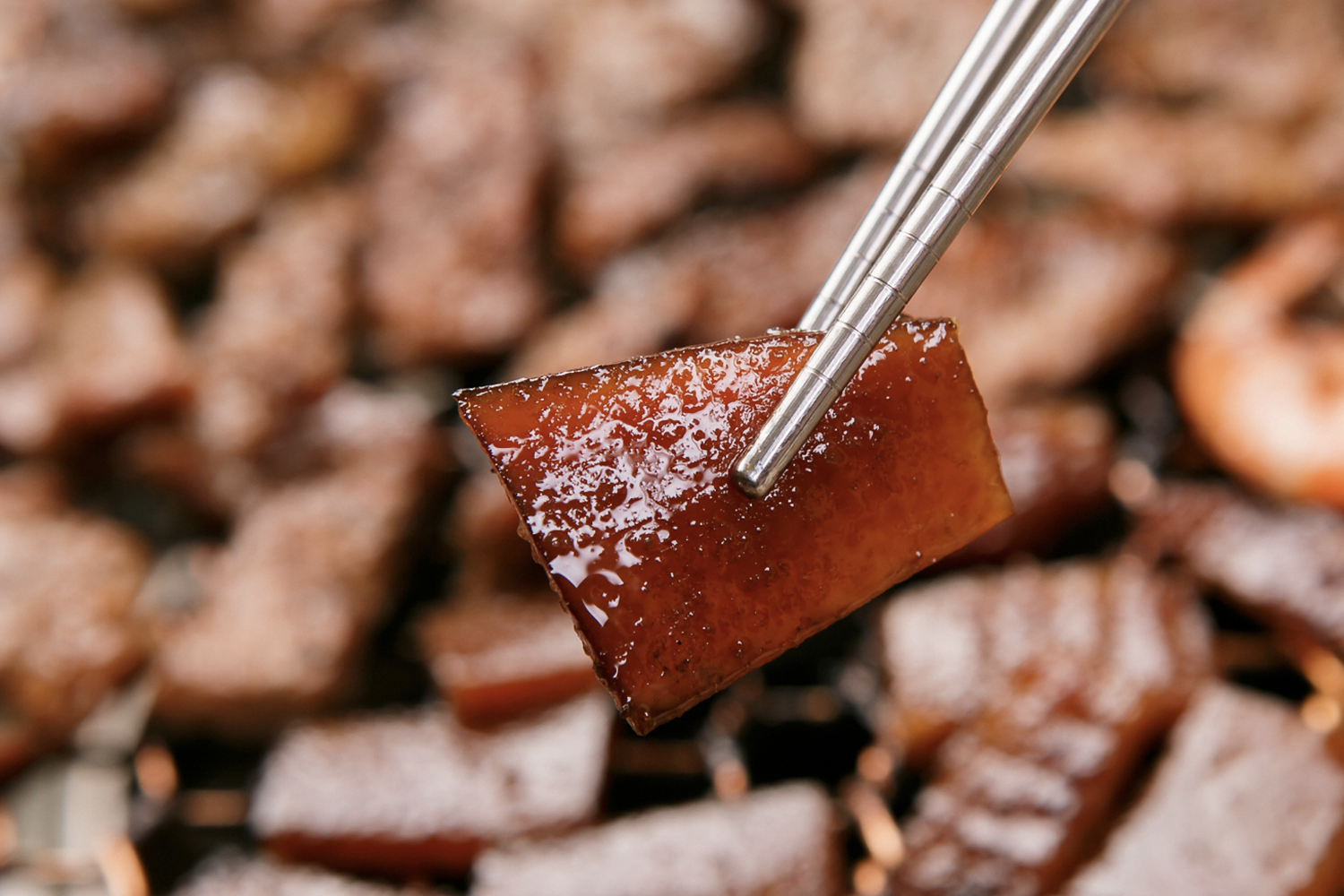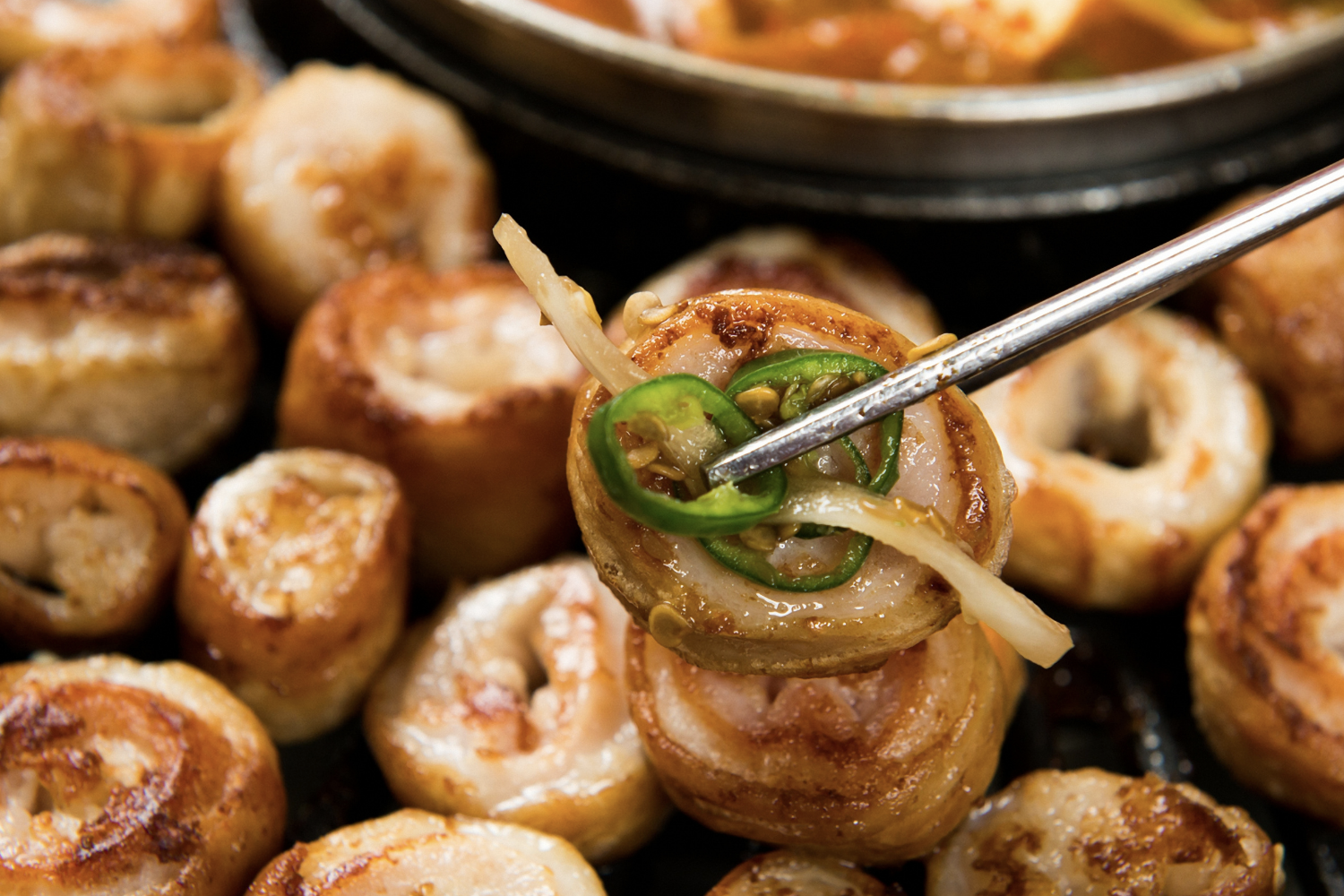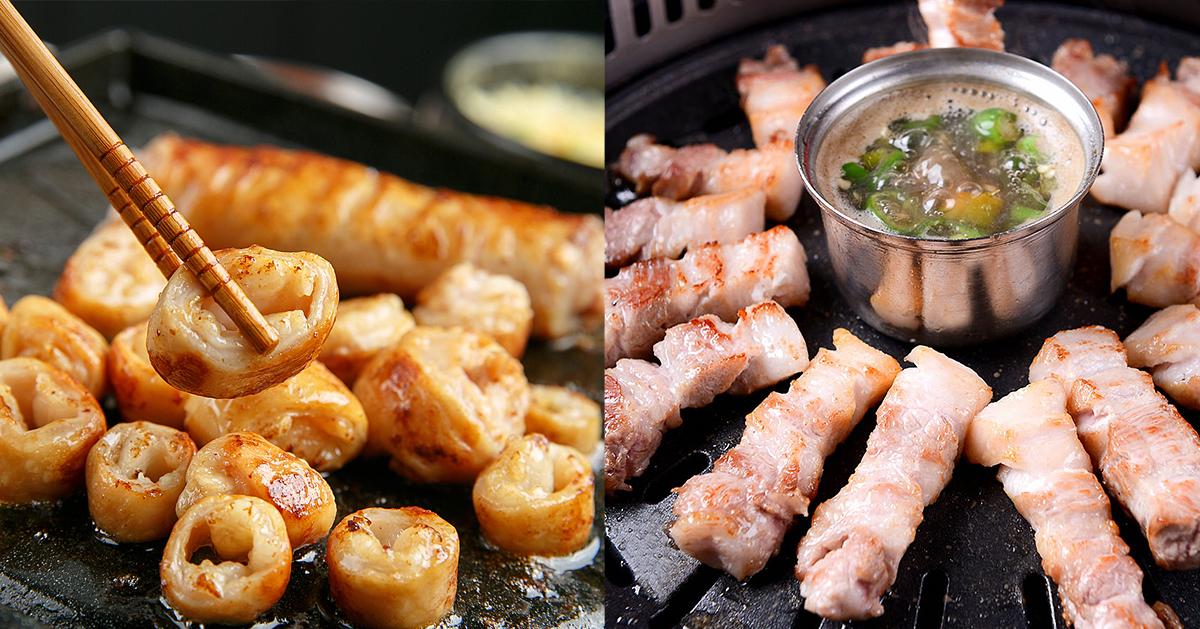Korean BBQ is a beloved culinary experience enjoyed by people worldwide. However, it's best experienced in its country of origin, Korea! In Korea, K-BBQ restaurants often specialize in just a few cuts of meat. You might wonder, what are the best cuts and how do they differ? Let's dive in and explore!
Popular Restaurants in Korea
Check out some of these super popular Korean BBQ restaurants in Seoul!
Samgyeopsal
(삼겹살)

Samgyeopsal, or pork belly, stands as the most popular cut for BBQ in South Korea. With countless BBQ restaurants scattered across the country, you'll find samgyeopsal featured on nearly every menu.
This dish is celebrated for its perfect balance of juiciness and lean meat, making it a hallmark of Korean cuisine for many foreigners.
Prices can vary based on the pork's origin. Domestic pork, considered the finest quality, tends to be slightly more expensive.
Moksal
(목살)

Moksal, pork from the neck, is another cherished cut for grilling in South Korea. It demands more care than samgyeopsal; overcooking can lead to a chewy and tough texture. With less fat and more meat compared to samgyeopsal, moksal is definitely worth trying!
Hangjeongsal
(항정살)

If you find the moksal cut too chewy, consider trying hangjeongsal! Also sourced from the neck, this cut is more tender and rare (and pricier) than moksal. But pay close attention when cooking it. Like moksal, hangjeongsal doesn't fare well if left on the grill too long.
Dwaejigeopddaegi
(돼지껍데기)

Pork rind is a favorite among many Koreans on the BBQ menu! It is normally ordered when you're too full for another portion of the mains cuts of pork but want more. Watch out for the popping and crackling on the grill to avoid burns. When enjoying pork rind in Korea, be sure to dip it in roasted soy bean powder for an incredible flavor combination! Who else loves this chewy, collagen-rich cut?
Chadolbagi
(차돌박이)

Chadol-bagi, or thinly shaved beef brisket, is another popular choice for grilling in Korea. Its soft and tender texture means it cooks quickly on the grill. Typically unmarinated, it's served with sesame oil mixed with salt and pepper, providing a delicious dipping sauce for the juicy meat.
Galbi
(갈비)

Galbi, the Korean word for ribs, can refer to either pork or beef ribs in Korean restaurants. These ribs are often boneless and come in a sweet marinade, though the specific recipe can vary by restaurant. Galbi is quick to grill since it's not frozen, making it a favorite barbecue item for many. The sugars in the marinade tend to burn easily so ask for a grill change when your grill becomes too burnt!
Deungshim
(등심)

Deungshim, or sirloin, is one of the most favored beef cuts for Korean BBQ. Unlike galbi, it typically isn't marinated. This cut is soft and fatty, offering a melt-in-your-mouth experience. Make sure to look for deungshim on the menu the next time you visit a Korean BBQ restaurant. It's a choice you won't regret!
Daechang
(대창)

Daechang, or beef large intestines, is a cut that's both juicy and chewy, adored by many Koreans. When placed on a sizzling grill, its layers of fat are revealed, creating an enticing aroma. Sinfully irresistible once you acquire a taste for it, daechang is definitely a must-try!
Gopchang
(곱창)

Gopchang refers to the small intestines, sourced from either pork or beef. This cut is less fatty than daechang but remains rich in flavor. It boasts a chewier texture along with a more pronounced taste and smell. Koreans enjoy pairing it with perilla leaves and spicy gochujang sauce for a harmonious blend of flavors.
Makchang
(막창)

Makchang is a distinctive cut, coming from either the cow's fourth intestine or the pig's last intestine. Though leaner than daechang, it retains a juicy quality. It's somewhat chewier than gopchang and typically comes with a higher price tag. For a lighter and more flavorful option, we recommend trying beef makchang over its pork counterpart, as it's less fatty and, in our opinion, more delicious.
Hanwoo
(한우)

Japan is renowned for its Wagyu beef, while Korea boasts its own premium beef, Hanwoo! Hanwoo comes from a native Korean cattle breed and must be certified to carry the name. Distinct in both taste and price from other beef varieties found in the country, Hanwoo offers a unique experience. Despite its higher price tag, beef enthusiasts will definitely want to savor this exquisite offering!
Anshim
(안심)

Anshim, the Korean term for tenderloin, truly has it all: texture, juiciness, and a robust meat flavor. Restaurant staff will often assist by cutting it into perfect, mouth-sized pieces, while also removing any tendons, ensuring a sublime dining experience.
Salchisal
(살치살)

The chuck tail flap, known in Korea as salchisal, stands as another rare and sought-after beef cut. This cut is typically prepared as a very thin steak, celebrated for its fine texture and rich flavor.
Want to experience top-quality Hanwoo Beef but don't know where to go? Check out Creatrip-recommended Hanwoo Beef restaurants in the link below!
Pork Cheek
(가브리살)

Lastly, let's not forget about pork cheek meat, the priciest pork cut. In Korean, it's known as 가브리살 (gabeuri-sal), distinguished for being softer and more tender than other pork cuts mentioned. Due to its delicacy, it can easily burn, so vigilant attention to the grill is essential!
Best Korean BBQ Restaurants
I hope this guide has made it easier for you to distinguish between the various cuts for your next K-BBQ adventure! If you have any questions or concerns, please leave a comment below or send us an email at help@creatrip.com. You can follow us on Instagram, TikTok, Twitter, and Facebook to stay updated on all things Korea!




